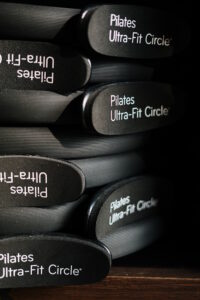
Pilates is a popular exercise method that has gained worldwide recognition for its ability to enhance strength, flexibility, and body awareness. Created by Joseph Pilates in the early 20th century, this fitness regimen has evolved over time and has become an integral part of many people’s fitness routines. As a foremost expert on Introduction to Pilates: History, Principles, and Key Concepts, I am delighted to guide you through the origins of Pilates, its fundamental principles, and the key concepts that make it such an effective exercise system accessible to everyone.
What is the brief history of Pilates?
Joseph Pilates, the visionary behind the Pilates method, was born in Germany in 1883. As a child, he battled various health issues and dedicated his life to improving his physical strength and endurance. He combined his knowledge of various exercise forms, including yoga, calisthenics, and gymnastics, to create a unique system of movements that aimed to improve both the mind and body.
During World War I, Joseph was interned as a prisoner of war in England, where he further developed his exercise method, often using bed springs to help immobilized patients exercise and rehabilitate. This innovation laid the groundwork for the Pilates equipment we see in studios today, such as the Reformer and Cadillac.
After the war, Joseph Pilates moved to New York City, where he opened his first studio in the 1920s. The method gained popularity among dancers and athletes, thanks to its focus on core strength, flexibility, and alignment. Joseph continued to refine his technique, which he initially called “Contrology,” until his passing in 1967.
In the decades that followed, Pilates continued to grow in popularity and has now become a globally recognized exercise method, taught in studios, fitness centers, and even online platforms, making it accessible to people of all ages and fitness levels.
What are the key concepts of Pilates?
Pilates is not just a series of exercises but a comprehensive approach to body movement and control. Several key concepts underpin the Pilates method, making it a holistic and effective fitness practice:
1. Core Strength: The core, often referred to as the “powerhouse,” is the center of Pilates. It encompasses the muscles of the abdomen, lower back, hips, and glutes. Pilates emphasizes building a strong and stable core, which provides the foundation for all movements and helps maintain proper alignment.
2. Breathing: Joseph Pilates emphasized conscious and coordinated breathing during exercises. Deep, diaphragmatic breathing not only oxygenates the body but also aids in activating the core and promoting relaxation.
3. Body Awareness: Pilates encourages participants to develop a heightened sense of body awareness. By focusing on precise movements and alignment, individuals can better understand their bodies and how they move, leading to improved posture and control.
4. Concentration: Pilates exercises require concentration and mental focus. Mind-body connection is essential to perform movements with precision, preventing injury and maximizing the benefits of each exercise.
5. Control: The name “Contrology,” originally given to Pilates by Joseph himself, emphasizes the importance of control in every movement. Pilates aims to perform exercises with smooth, controlled, and fluid motions, avoiding jerky or haphazard movements.
What are the 5 Pilates principles?
Joseph Pilates outlined five fundamental principles that serve as the guiding philosophy behind the Pilates method:
1. Centering: The principle of centering emphasizes engaging the core muscles to support and stabilize the spine. By drawing energy from the center of the body, practitioners can maintain balance and control throughout each exercise.
2. Concentration: Concentration is crucial in Pilates, as it fosters the mind-body connection necessary for precise and controlled movements. Focused attention on the execution of each exercise ensures optimal results.
3. Control: The principle of control emphasizes performing movements with precision and mastery. By avoiding abrupt or uncontrolled actions, individuals can maintain proper alignment and reduce the risk of injury.
4. Precision: Pilates places great importance on precision in movement. Each exercise has a specific form and alignment, and practitioners strive to execute them with exactness to achieve the intended benefits.
5. Breath: Breathing is integral to the Pilates method. The breath is coordinated with each movement, facilitating relaxation, promoting circulation, and aiding in core activation.
How good posture changed my life?
As a Pilates enthusiast and instructor, I can attest to the transformative effects of this exercise method on my life. Through consistent practice of Pilates, I have developed a heightened sense of body awareness and control, which has positively impacted my daily movements and posture.
By incorporating the key concepts and principles of Pilates into my routines, I have significantly improved my core strength, flexibility, and balance. This newfound physicality has not only enhanced my performance in other physical activities but has also alleviated persistent aches and pains caused by poor posture.
Moreover, the emphasis on breathing and mental focus during Pilates exercises has helped me manage stress and cultivate mindfulness. I have experienced greater clarity of mind and increased relaxation, which have translated into improved overall well-being.
In conclusion, Pilates is a powerful exercise method that goes beyond physical fitness; it is a lifestyle that promotes body-mind integration and personal growth. With its rich history, well-defined principles, and focus on key concepts, Pilates offers a holistic approach to health and wellness accessible to individuals of all ages and fitness levels. By embracing Pilates and incorporating its principles into your life, you too can experience the myriad benefits it has to offer and witness the positive impact it can have on your physical, mental, and emotional well-being.